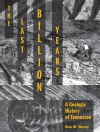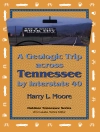This book presents the forensic geoscience in general and, in particular, in Italy and their application to peculiar crimes. Italy is internationally relevant due to the presence of different kinds of “geo-crimes” (in the first place, environmental mafia), and is emblematic to understanding the best way to fight these crimes. This book will not only offer a new view point to comprehending these “geo-crimes”, but also fresh and updated results of the different methods applied to fight against these crimes. This book is unique in that it is not a collection of articles but an individual work with the same theme beginning with a state-of-the-art of these disciplines to their international value passing through several case studies.
Inhoudsopgave
Preface.- Chapter 1 – Introduction to forensic geoscience.- 1.1 The Applications of forensic geoscience.- 1.2 Crime Scene Investigations.- 1.3 The geo-scientific approach to crime scene.- Chapter 2 – Geological materials on the crime scene.- 2.1 Minerals.- 2.2 Rocks.- 2.3 Sands.- 2.4 Dusts.- 2.5 Soils
.- 2.6 Gems
.- 2.7 Precious metals
.- 2.8 Fossils.- Chapter 3 – Pedology applied to forensics.- 3.1 Characteristics of forensic soils.- 3.2 Interdisciplinary in studies and forensic soil science analysis.- 3.3 The site survey in forensic soil science applications.- 3.4 The collection of evidence and preservation of traces of soil samples.- 3.5 The effects of wrong methods and operations during site surveys and evidence collection.- 3.6 Issues related to traces of soil
.- Chapter 4 – Forensic Analysis of Soils and Geological Materials.- 4.1 Forensic laboratory analytical procedures for soils.- 4.2 Color analysis.- 4.3 The particle size analysis.- 4.4 Density analysis.- 4.5 Stereoscopic microscope analysis.- 4.6 Analysis by means of the polarizing microscope.- 4.7 X-ray diffraction analysis.- 4.8 SEM-EDX spectroscopy.- 4.9 Raman Spectroscopy.- 4.10 FT-IR spectroscopy.- 4.11 Thermal analysis.- Chapter 5 – Remote sensing applications in forensic investigations.- 5.1 Photointerpretation
.- 5.3 Forensic photo-interpretation.- Appendix – A brief history of aerial photography in Italy.- Chapter 6 – Forensic Geomorphology.- 6.1. Overview.- 6.2. Principles and concepts of geomorphology.- 6.4. Determining the activity state of landforms.- 6.5. The detection of surface deposits
.- Chapter 7 – Environmental Forensics.- 7.1 Inspections and historical research.- 7.2 Aerial photos and satellite footage.- 7.3 GPS surveys and DTM.- 7.4 Operating modes of sample collection.- 7.5 Packaging and transport.- 7.6 Worksite operating issues.- 7.7. Forensic environmental expert’s activities.- Chapter 8 – Forensic Geophysics.- 8.1 Forensic geophysics.- 8.2Pros and Cons of forensic geophysics.- 8.3 Cadaver dogs.- 8.4 Survey criticalities.- Appendix – How does GPR work.- Chapter 9 – Forensic Archaeology.- 9.1 Forensic archeology.- 9.2 Stratigraphic excavations at the crime scene.- 9.3 Forensic Archaeology and the integrated approach.- 9.4 Survey criticalities.- Chapter 10 – Quality, Expertise, and Ethics in Forensic Geoscience.










